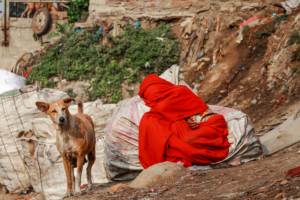Fatigue Sleep
Muhammad Amdad Hossain
Dhaka’s homeless poor have lost their homes and property due to frequent flooding, river erosion, and other natural disasters. They are forced to migrate to the city, searching for a better future. These people have nowhere to shelter in the big cities. Their day starts on landfill streets and ends on roads to nowhere. The concrete-covered street is a parterre for these refugees who virtually have no identity. They live by working as street vendors, day laborers, and doing other odd jobs.
Bangladesh, a small country in South Asia, is the eighth most populous country in the world, with more than 160 million inhabitants. Not surprisingly, most of its inhabitants reside in overcrowded cities; the capital, Dhaka, alone is home to 21 million people. With such a vast population concentrated in such a narrow region, space, and resources are at a premium. Nearly one in four people live in poverty, and homelessness in Bangladesh is prominent; five million people are homeless, and 124 million live in mud and shanty houses.
Poverty and homelessness have an intertwined relationship; the circumstances of poverty-such as debt, lack of education, poor mental and physical health, and disability-are underlying causes of homelessness.
Bangladesh’s homeless population, especially women abandoned by their spouses and too poor to fend for themselves, are exposed to many cases of violence, drug addiction, and sexual assault. A 2009 study revealed that 83% of the homeless women surveyed had been assaulted by their husbands, male police officers, and other men around them. Sixty-nine percent of the men surveyed used locally available drugs, such as heroin, and two-thirds of the injecting drug users shared needles.


